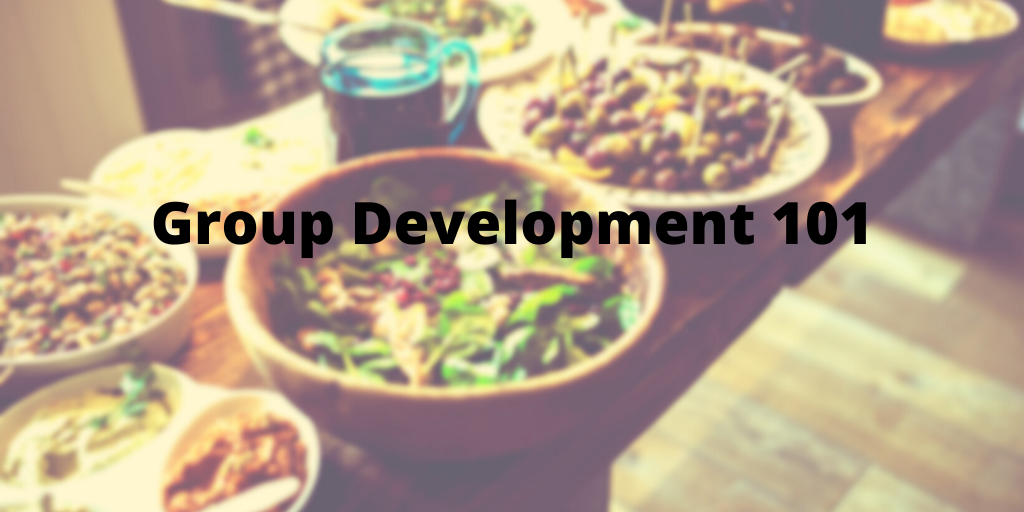
Today’s Buzz is by Laura Hardwicke– connect with her on LinkedIn and Twitter!
What I’m Watching: SNL leftovers from this weekend
What I’m Reading: Recipes to up my potluck game
What I’m listening to: My dog go to town on a squeaker toy
If you’re like me, later this week you’ll be enjoying a massive meal and to a certain extent, the company of your loved ones. If you’re like me, you also enjoy using theories and concepts from your professional world to analyze your personal life and family members. So in today’s Buzz, I’ll give you a refresher on one of my favorite topics for both: group development. Here are some ways you can apply it to your next big project or family meal.
Several models are used to describe the cycle of group development. Generally, there are four phases to the group process: forming, norming, storming and performing.

Think of them as a weather forecast. They can help you determine what to wear, but be prepared for dramatic shifts in temperature. By no means are these stages prescriptive. If you don’t fully work out one phase it will be difficult to achieve the groups goals, but not impossible.
Forming
This isn’t just awkward introductions. This stage is characterized by dependency and inclusion. Guess what? Every time someone new joins your group or someone leaves, you start the development cycle again. So make sure you’ve got all the divisions represented the first time you discuss a department initiative. And you better believe you get to relive all the family ‘storming’ when someone brings home a new bae or baby.
You know you’re still forming when the team relies on previous or subconscious communication structures. You’re just going through the motions. Folks seem just a little too courteous, ready to exchange acceptance for acceptance. Don’t worry, it shouldn’t last.
Storming

The masks that we wore in the first stage come off, and our true motivations are revealed during storming. Conflict is good, so long as you keep it task oriented and not personal. This phase can help clarify our shared vision, values, and exactly how lumpy mashed potatoes are supposed to be. How the group addresses conflict in this stage is crucial to creating structure and build trust for the next stage.
Norming
Norming occurs when conversations in the storming phase become more mature and solutions-based.You are working towards defining the group’s objectives, and can come to an agreement on how to reach them. Such as: to meet our deadline, the team should meet every other week; or we know the food is going to be on the table at 4pm, and everyone is expected to be washed-up.
Performing
The work we do in the prior phases set us up for success in the fourth phase. You ooze competence and trust each other. In this stage, leaders can focus on developing member’s individual strengths. Problems still arise, but we can embrace them and find solutions. Some groups may only achieve this state of flow for a short time before they’re needing to go back to a previous stage and address it more completely.

Adjourning
Recently, researchers are giving more thought to a fifth phase, adjourning. This is the final end point of a group. For example, maybe your grant program is no longer funded, or a special task force has reached its goal. Not all groups have this phase. If your group does, be sure to over-communicate to relieve any anxiety associated with the groups end. Read: who is going to do all these dishes when you guys leave?
Happy Thanksgiving and group-processing!
